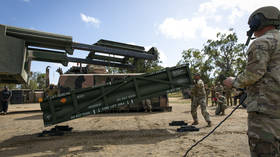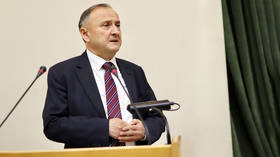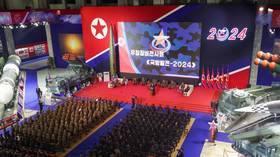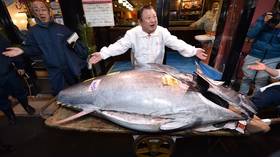NASA planet-hunting probe finds its 1st Earth-sized world in habitable zone sweet spot
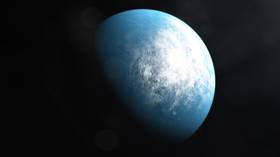
NASA’s Transiting Exoplanet Survey Satellite (TESS) has discovered its first Earth-size planet in its host star’s habitable zone, the sweet spot for liquid water, life, and maybe one day human colonization.
While there have been other contenders discovered in the TRAPPIST-1 system and several potentially-habitable worlds identified by NASA’s Kepler Space Telescope, the recently discovered exoplanet TOI 700 d was the first discovered by TESS with the help of NASA’s Spitzer Space Telescope.
TOI 700 is a small, cool M class dwarf star roughly 100 light-years away in the constellation Dorado. It boasts 40 percent the mass and size of our sun, with roughly half the Sun’s surface temperature.
Around the star, TESS has observed at least three planets, only one of which is in the so-called ‘Goldilocks Zone’ which might produce conditions for human habitation and for life, most notably those that allow for liquid water on the surface.
Planet TOI 700 b is almost exactly Earth-sized, probably rocky, and completes an orbit every ten days while TOI 700 c is 2.6 times larger than Earth, orbits every 16 days and is likely to be a gassy planet, though both are too close to the sun to sustain life.

TOI 700 d, however, is the outermost of the three and the only planet in the habitable zone of the system. It is 20 percent larger than the Earth, has an orbit of 37 days, and absorbs 86 percent of the energy that the Earth receives from the Sun.
NASA believes that the planets are all tidally locked, which means they rotate once per orbit meaning one side of the surface is in constant sunlight. This would mean that, if it has an atmosphere, its cloud formations and wind patterns would be vastly different from those found here on Earth.
Also on rt.com Earth not so unique? First ‘habitable’ world with WATER in atmosphere found using Hubble“Additionally, in 11 months of data we saw no flares from the star, which improves the chances TOI 700 d is habitable and makes it easier to model its atmospheric and surface conditions,” Emily Gilbert, a graduate student at the University of Chicago.
Researchers at NASA’s Goddard Space Flight Center in Greenbelt, Maryland modelled 20 possible environments for TOI 700 d, including one ocean-covered simulation, with a CO2-rich atmosphere similar to what scientists believe Mars was like many years ago.
Another model led to a cloudless, all-land version of modern Earth, with winds flowing away from the night side of the planet, all converging on a point directly facing the star.
Future missions will hopefully determine whether the planets have atmospheres or not and what their composition is.
Like this story? Share it with a friend!
Subscribe to RT newsletter to get stories the mainstream media won’t tell you.


